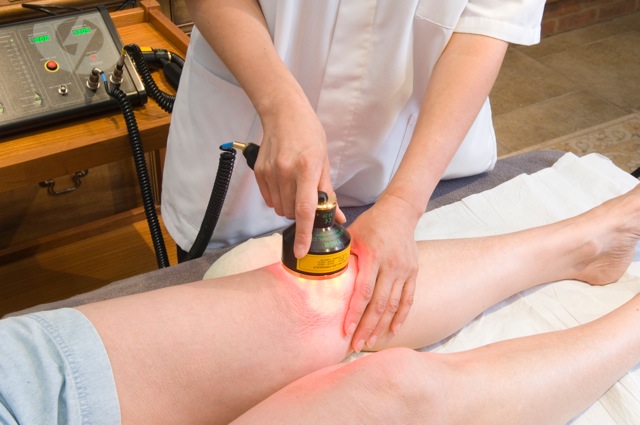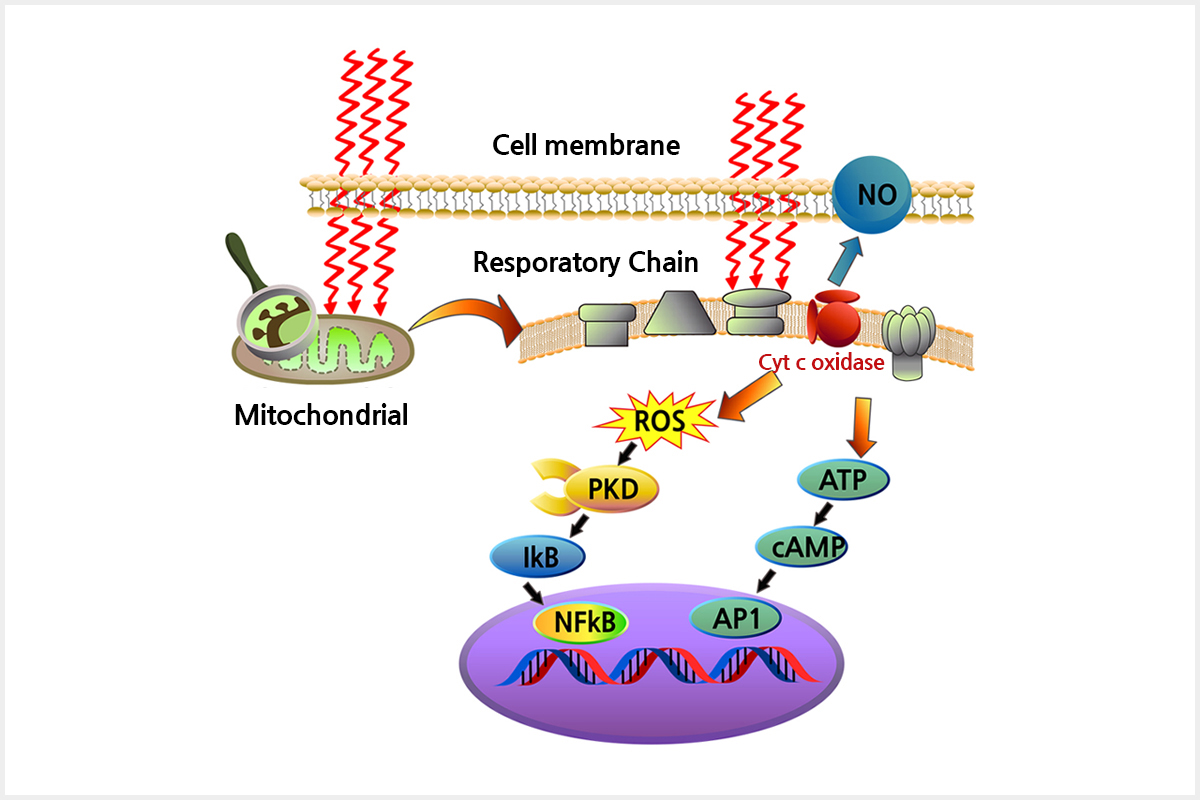Little Known Facts About Photobiomodulation.
Table of ContentsPhotobiomodulation - An OverviewPhotobiomodulation for DummiesFascination About PhotobiomodulationThe Ultimate Guide To Photobiomodulation
Laser therapy is a medical therapy that utilizes concentrated light to stimulate a process called. Throughout PBM, photons enter the tissue and interact with the cytochrome c complicated within mitochondria. This communication triggers an organic waterfall of events that results in a rise in cellular metabolic rate, which can in addition to increase the healing process.There is agreement that the application of a healing dose of light to damaged or useless cells results in a mobile feedback mediated by mitochondrial mechanisms. Photobiomodulation. Research studies have shown that these modifications can impact pain and swelling, as well as, tissue repair service
Changes in ATP, reactive oxygen types and nitric oxide adhere to light absorption by Cc, O. These effects are redox state and dosage reliant. In hypoxic or otherwise worried cells it has actually been revealed many times that adhering to, nitric oxide is released, ATP is boosted and oxidative anxiety is lowered [27-31]

Some Ideas on Photobiomodulation You Should Know
PBM gadgets have been gotten rid of for advertising and marketing by FDA with the Premarket Notification/510( k) process as adjunctive gadgets for the momentary relief of discomfort. These clearances were based upon the discussion of scientific information to support such cases (Photobiomodulation). In this treatment, a source of light is positioned near or touching the skin, enabling the light power (photons) to permeate cells where it communicates with chromophores situated in cells resulting in photophysical and photochemical changes that cause alterations at the molecular, mobile and cells levels of the body
Remarkably, current research study indicates that light can improve performance in normal cells and cells. The potential applications of PBMT are many and are being explored experimentally at the fundamental scientific research, pre-clinical and medical degree. The present professional usages are for the relief of pain and swelling and the therapy of sports injuries.

The treatment parameters and number of sessions required for PBMT are dependent upon area and reason. PBMT normally needs more than one therapy for optimum discomfort alleviation.
The Buzz on Photobiomodulation
Treatment specifications for PBMT were initially developed using cells artificial insemination and in tiny pet models. These treatment specifications usually had a low irradiance and fluence and worked well for cutaneous applications. Nevertheless when medical visit homepage professionals began to utilize PBMT to deal with structures that lay deeper in the body, they utilized these parameters with unfavorable outcomes.
We currently comprehend that these adverse researches were due to inaccurate gadget and treatment criteria for transcutaneous treatment of much deeper structures. Current advances in laser therapy tools and even more study into the suitable does have dramatically enhanced the outcomes of PBMT. For dealing with deep cells, the wavelength of light made use of establishes the deepness of penetration into a tissue.
It is vital that a clinician uses the appropriate wavelength of light and criteria to treat a problem. One wavelength and one collection of treatment criteria will certainly not work for all problems. Adverse adverse effects have not been reported from using PBMT (Photobiomodulation). Updated June 27, 2016Juanita j
Light treatment is a non-invasive treatment that works by increasing the capacity of the cell to create power (ATP) to heal the location being dealt with. Therefore, it can reduce swelling, swelling, and pain in the location. Study around is increasing, with more comprehensive research study papers linked below for those that wish to find out more.
8 Simple Techniques For Photobiomodulation
In the initial experiment, Dr. Endre Mester, made use of shaved rats and observing exactly how the laser influenced their capability to grow hair compared to the team that was not receiving LLLT. He found that the group of mice getting LLLT were able to grow their hair back faster than the team of mice that didn't obtain LLLT (Hoon C, et al; 2012).
This treatment is termed by doing this to distinguish the difference in between the lasers some professions utilize to cut (eg. in surgical treatments, or oral treatments). Low-level light treatment is painless, non-invasive therapy. It is made use of to lower swelling, swelling, and chronic joint disorders, minimize discomfort and accelerate injury healing of nerves and tissues (Hoon C, et al; 2012).
LLLT has a read review biphasic action, indicating that reduced doses are normally seen to be a lot more beneficial than greater doses. That being said, doses greater or lower than the optimum dose does not influence (Hoon C, et al; 2012). Consequently, it can be challenging to have researches on LLLT with many specifications.
Some companies integrated the 2 (LED and laser) to offer an extra all-around treatment since lasers can pass through deeper than LED and infrared light (Norman Doidge, The Brain's Way of Recovery, 2015). During therapy, the area that is being treated is subjected to LED light from a Bio, Flex Laser, which is at 660 nm wavelength, adhered to by infrared light at 830-840 nm wavelength.